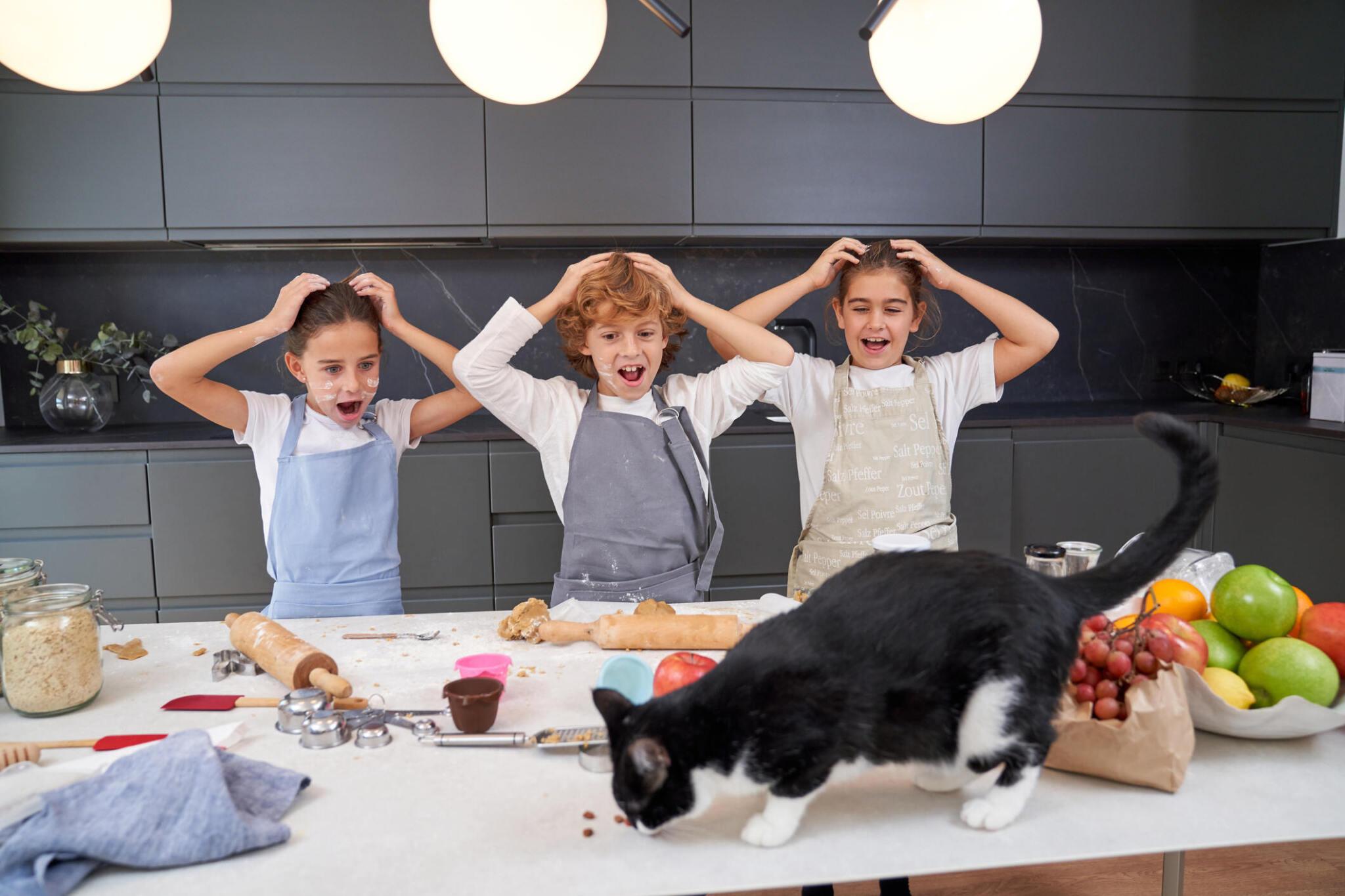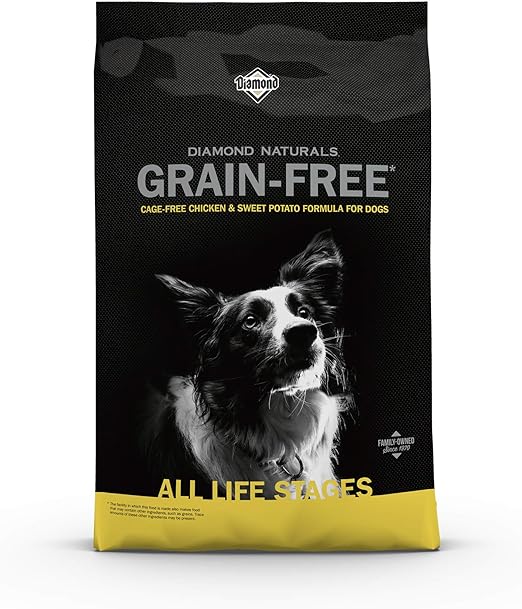You’ve likely had a cat climb into your lap, circle round and round, then start rhythmically kneading your thighs with those needle-sharp claws extended. Ouch! What’s prompting this painful yet oddly endearing behavior? Those biscuit-making kitties are actually engaging in an instinctive act that traces back to their days as nursing kittens. When they’d knead mama’s belly to get the good stuff flowing. Now, as grown cats, they carry on the kneading tradition purely for comfort and affection. So next time your feline friend turns you into a pincushion, understand it comes from a place of contentment and trust. Then distract them with a toy to save your legs!
What Is “Making Biscuits”?
Have you ever watched your cat knead a blanket, pillow, or even your lap with their paws, as if they’re massaging the area? This behavior is commonly known as “making biscuits” and it’s completely normal for felines. Kittens start making biscuits at a very young age, kneading their mother’s belly to stimulate milk production while nursing. The motion and sensation become comforting to them, so they continue doing it into adulthood.
A Soothing Instinct
For your cat, making biscuits is an instinctual, soothing act. It releases endorphins in their brain that calm and relax them. Your cat may make biscuits when they’re feeling content, cozy and bonded with you. The kneading, treading motion is second nature to them, even though they’re no longer feeding from their mother.
A Sign of Affection
When your cat makes biscuits on you, it’s usually a sign they feel completely at ease and bonded with you. They see you as a source of comfort and security, just like their mother was when they were kittens. Your cat’s purring, half-closed eyes and a relaxed posture while making biscuits on you shows how content and happy they are in that moment. It’s one of the most endearing ways cats express their affection and trust in their owners or other feline companions.
Providing a Comforting Surface
You can encourage your cat’s biscuit-making behavior by providing soft, plush surfaces for them like:
• Fleece blankets • Plush pet beds • Your lap!
Gently petting and praising your cat when they make biscuits will positively reinforce how much you enjoy their affectionate behavior. Making biscuits is a natural part of a happy, well-adjusted cat’s behavioral repertoire, so appreciate this soothing ritual your feline companion shares with you.
Origins of Kneading: Nursing Kittens
Kittens knead their mother’s belly when nursing to stimulate milk production and flow. This behavior is instinctual and comforting for them, and it continues into adulthood as a way for your cat to self-soothe.
When kittens are just a few weeks old, their eyes are barely open and they rely completely on their mother for food and comfort. As the tiny kittens nurse, they knead the area around their mother’s nipples with their paws, also known as “making biscuits.” This kneading action releases oxytocin in the mother cat, which triggers milk letdown.
The kneading motion becomes associated in the kitten’s mind with the comfort and pleasure of nursing. Even after they are weaned, the kneading instinct remains and is often directed at soft surfaces that remind them of their mother’s fur—like blankets, pillows, and their human’s lap.
Your cat may purr loudly while kneading and appear extremely content. Some cats drool excessively or suck on the surface they’re kneading. These behaviors are reminiscent of nursing and provide psychological comfort.
Some cats continue to knead into old age. Kneading is usually a sign of a happy, well-adjusted cat. It shows that your cat feels utterly relaxed, content and secure in their environment and sees you as a source of comfort. While the behavior may sometimes be inconvenient if directed at your lap, it’s best to gently redirect your cat to an acceptable surface rather than punishing them for this natural instinct.
Providing your cat with appropriate outlets for kneading, like a soft cat bed, plush blanket or stuffed animal, can give them comfort and help preserve your lap from being made into biscuits! Understanding the origins of this endearing behavior in kittens can help you better appreciate your cat’s need to knead.
Kneading Stimulates Milk Production
Have you ever wondered why cats make biscuits, kneading soft surfaces like blankets, pillows, and even their owners? This behavior is actually a leftover instinct from kittenhood that provides comfort and security for cats.
As kittens, the kneading motion helps stimulate their mother’s milk flow so they can nurse. The repetitive motion of pushing in and out with their paws becomes ingrained in their behavior and memory. Even as adult cats, kneading a soft, pliable surface triggers that same comforting feeling they had as kittens.
Your cat may knead your lap, a blanket, or their bed when they’re feeling content, relaxed, and want to bond with you. It shows they feel safe, secure, and cared for. The kneading motion releases endorphins in their brain that soothe and calm them.
Some cats may even purr, suckle, or drool a bit while kneading as they slip into a blissful, meditative state. The combination of kneading, purring, and suckling is essentially your cat regressing to their happiest memories as a nursing kitten with their mother.
Providing your cat with soft, blanketed areas to knead gives them an outlet for this natural instinct and allows them to self-soothe whenever they feel the need. You might notice your cat kneading most often when they’re tired or want affection and cuddling. Giving your cat your undivided attention, petting and brushing them during these times can help strengthen your bond.
While occasional kneading is usually nothing to worry about, excessive or obsessive kneading could be a sign of stress, anxiety, or insecurity in some cats. Make sure to give your feline friend plenty of play, exercise, affection, and interactive toys to keep them stimulated and build confidence. With patience and love, you can help an anxious cat feel more at ease over time.
The Soothing, Comforting Motion
Kittens start kneading and ‘making biscuits’ from a very early age. As they nurse from their mother, they massage her belly to stimulate milk flow and strengthen their leg muscles. This motion becomes hardwired in them as a source of comfort and security. Even as adult cats, kneading soft surfaces like blankets, pillows, and their owners mimics that soothing behavior from kittenhood.
A Self-Soothing Action
For cats, kneading releases endorphins that calm anxiety and promote feelings of contentment. The motion of rhythmically pushing in and out with their paws, the sensation of something soft under their feet, the memory it evokes of nursing as kittens—it all combines to create a comforting experience. Many cats will purr while kneading, another sign they are relaxed and pleased.
If your cat makes biscuits on you, especially on your lap or belly, it is a sign they feel completely comfortable with you and view you as a source of security. The behavior demonstrates contentment, trust, and even affection for their human companion. Some cats may drool a bit or suckle on the blanket as they knead, more evidence of how it evokes their earliest nurturing experiences.
Providing Comfort
You can provide your cat opportunities to engage in this comforting behavior by:
• Having soft blankets, towels or cat beds readily available where they like to nap or cuddle with you.
• Giving them interactive cat toys that dispense treats or kibble and encourage pawing and kneading. Puzzle feeders and activity mats that make them work for rewards are great for this.
• Petting, brushing and gently massaging your cat, especially in areas like their paws, belly and ears. This interaction and physical contact will make them feel relaxed and bonded with you.
• Respecting your cat’s space when they are making biscuits. While you may be tempted to interrupt them because it’s adorable, let them continue undisturbed so they can fully enjoy that comforting sensation. Your cat will appreciate your understanding!
Kneading may seem like a peculiar behavior, but for cats it is a natural, nurturing action that makes them feel cozy, secure and loved. Providing opportunities for your cat to make biscuits will help enrich their environment and strengthen your bond.
Adult Cats Retain Kitten Instincts
As kittens, your cat’s favorite thing to do was knead and purr while nursing from their mother. This comforting behavior provided warmth, nourishment, and bonding during those early days. Fast forward to now, and your feline companion still seeks out that same cozy feeling of contentment—by kneading you!
Your cat’s biscuit-making on your lap, blanket, or anywhere else soft is their way of recreating that soothing experience from kittenhood. Their paws have retained the instinct to gently push and massage, as if stimulating milk flow, even though they’re no longer nursing. For many cats, kneading while purring is a signal that they feel utterly relaxed, secure, and bonded with you.
A Lifelong Habit
Once learned as kittens, the habit of kneading typically sticks with cats for life. Some cats will knead the air, or any soft surface, when they’re in a state of bliss. The behavior can be self-soothing or a way for your cat to show affection toward you or a favorite blanket or toy. Either way, kneading is usually a sign your cat feels safe, content and cared for.
The next time those soft paws start pushing into your lap, know that your cat is revisiting their comforting kittenhood and strengthening your lifelong bond. Gently petting or massaging them while they knead will reinforce that you appreciate them and the blissful mood they’re in. Some other ways adult cats display their retained kitten instincts include:
- Purring: Originating from kittens purring while nursing, purring in adult cats is a sign of happiness and contentment.
- Playing: Bouncing feathers and pouncing on toys mimics the play hunting behaviors kittens learn from their mothers.
- Grooming: Cats often groom each other as kittens, so your cat may lick you to show affection and strengthen your bond.
- Snuggling: Curling up together for naps is a social behavior in kittens that many cats continue with their owners for life.
Your cat may act all grown up, but their biscuit making, purring, playing, grooming and snuggling prove their inner kitten is here to stay. These nurturing behaviors are their way of strengthening your lifelong bond of care, trust and affection.
Sign of Relaxation and Affection
When your cat kneads your lap or a cozy blanket, it’s showing you it feels completely at ease and content in your company. This behavior, often called “making biscuits,” is a sign of deep relaxation, comfort and affection for you.
As kittens, the kneading instinct helped stimulate their mother’s milk flow during nursing. The motion brings back those feelings of warmth, nourishment and security. By kneading you, your cat is essentially saying you make it feel as safe and cared for as its mother once did. What a touching compliment!
Your cat may purr, meow or drool a bit while kneading to further demonstrate its pleasure and ease. The kneading often happens when you’re sitting or lying still, as your cat seeks to bond with you during a quiet moment. Some cats may knead the same spot on your body each time, like your lap, back or belly. They’re creatures of habit and find comfort in the familiar.
While the behavior is usually nothing to worry about and is your cat’s way of socializing with you, be on the lookout for any excessive or aggressive kneading. This could indicate underlying stress, anxiety or medical issues that need addressing with your vet. But in general, you should feel flattered when your feline friend starts making biscuits on you. It’s simply showing you the depth of its contentment and affection in your company.
You can encourage your cat’s kneading by:
- Giving it a soft blanket, pillow or stuffed animal on your lap to knead
- Petting and massaging your cat while it’s kneading
- Speaking to your cat in a soft, soothing tone
- Keeping a regular feeding and exercise schedule so it feels secure
By understanding and supporting this natural cat behavior, you’ll build an even closer bond of trust and help your feline feel more at ease. And there’s nothing quite as comforting as a contented cat purring in your lap.
Favorite Kneading Surfaces
As a comforting habit carried over from kittenhood, adult cats often have favorite places to “make biscuits” and knead. For many cats, their human’s lap is the prime kneading spot. Your lap provides warmth, softness, and the familiarity of their favorite person. Kneading on your lap is a sign of deep contentment, security, and bonding with you.
Blankets, especially fleece ones, are another favored kneading surface for cats. Their soft, pliable texture appeals to a cat’s desire to knead and also reminds them of their mother’s belly. Many cats will carry around, knead and even suckle on their favorite blankets. If your cat tends to shred or pull at blankets, providing them with their own special kneading blanket in their bed or carrier can satisfy their instinct in a safer way.
Beds, whether cat beds, dog beds or human beds, also make excellent kneading spots. The cushioning provides comfort and support for a cat’s paws while kneading. The familiar scents of a bed your cat frequently uses adds to their contentment. You may find your cat blissfully kneading in their cat bed, especially in a sunbeam or warm spot.
Stuffed animals or plush toys can become a cat’s kneading companion and surrogate littermate. Many cats will lick, knead and groom their stuffed animals as if they were real. The texture and filling of plush toys stimulates their kneading instinct. Offering your cat some plush toys, especially when they are kittens, can help redirect kneading from human body parts to a more appropriate object.
By providing your cat with soft, cozy surfaces that remind them of their earliest comforts, you are giving them opportunities to express natural and soothing behaviors. Their delighted kneading, purring and contentedness on their favorite spots will show you how much they appreciate it.
When to Discourage Excessive Kneading
As comforting as kneading may be for your cat, sometimes their biscuit-making can get out of hand. If your cat’s kneading causes damage or is disruptive, you’ll want to curb this behavior.
Damage Control
If your cat’s kneading is causing damage to furniture, blankets or your lap, it’s time to redirect them. Gently take your cat’s paws and move them away from the area they’re kneading while saying “No knead.” Provide a soft cat bed, blanket or lap pad for them to knead instead. You may need to confine them to the appropriate kneading spot for a few minutes after redirecting to reinforce the behavior. Be consistent and patient through the process.
Disrupting Your Space
Is your cat’s obsessive kneading keeping you up at night or making it difficult to work? It’s important to set limits. When your cat starts excessively kneading in an area you want to avoid, pick them up and move them to an appropriate cat bed. Don’t punish or yell at your cat, stay calm and redirect them. You may also want to avoid stimulation like play or snuggles right before bed to prevent over excitement.
Medical Issues
In some cases, excessive or sudden increase in kneading can indicate an underlying medical issue like arthritis or cognitive decline in senior cats. If kneading is disruptive, causes damage or seems out of the ordinary for your cat, it’s a good idea to talk to your vet. They can check for any medical causes and may recommend medication, supplements or environmental changes to help reduce discomfort and calm the behavior.
With consistency, patience and by addressing any underlying causes, you can teach your cat appropriate times and places for making biscuits. Meet their natural instinct for comfort while also protecting your space and belongings from damage due to obsessive kneading.
Why Do Cats Make Biscuits FAQ
Kittens knead their mother’s belly during nursing to stimulate milk flow, and this behavior often continues into adulthood as a comforting habit. If your cat makes biscuits on you, it’s a sign they feel content and secure in your presence.
Why do cats knead and purr?
Cats knead and purr when they’re feeling happy and cozy. Purring produces a calming vibration, and kneading releases endorphins that soothe your cat. Making biscuits on you means your cat views you as a source of comfort.
Do male or female cats knead more?
Both male and female cats are equally prone to making biscuits. It depends more on a cat’s upbringing and personality than gender. Cats that were orphaned or weaned too early as kittens may knead more often as a form of self-soothing.
How can I get my cat to stop kneading?
It’s difficult to fully break a cat of the kneading habit, since it’s instinctual behavior, but you can redirect your cat’s attention when they start making biscuits:
• Offer your cat a toy or treat to play with instead. Engage them in an interactive game to shift their focus.
• Gently push your cat’s paws away and say “No knead.” Repeat this each time they start kneading to teach them the behavior is undesirable. Be patient, as it can take many repetitions.
• Provide your cat with a soft blanket, pillow, or bed of their own to make biscuits on. Place it near where they usually knead on you. With consistency, they may learn to prefer kneading the bed instead.
• Make the area where your cat usually kneads on you less inviting by covering it or moving away. The lack of positive reinforcement may help break the habit over time.
• Give your cat extra playtime, scratching posts, and solo toys to keep them stimulated when you’re not around. Boredom can contribute to excessive kneading behavior.
With patience and consistency, these techniques may help curb your cat’s kneading habit, though they may still do it on occasion when they’re feeling especially content and cozy. But when your cat does make biscuits on you, just think of it as a compliment and a sign of their affection!
Conclusion
So when your cat hops into your lap, starts purring, and kneads her paws into your thighs, don’t push her off! She’s showing affection by engaging in an instinctual behavior that makes her feel safe and loved. Enjoy those precious biscuit-making moments, and take pride in the fact that your kitty feels so comfortable and content with you. Cherish the cat cuddles, and let your feline friend carry on with her cozy, kittenish kneading. After all, a purring, biscuit-making cat is a happy cat – and what more could you want from your furry companion?




